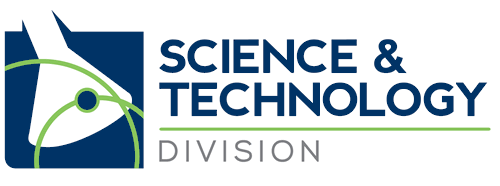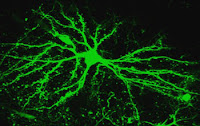1.1K
“Drugs and the Brain”
A MOOC from Coursera taught by Dr. Henry A. Lester of CalTech
Review by AmyLesiewicz
I recently finished up my first online class offered by Coursera. If you haven’t already checked them out, head over to www.coursera.org to see all of the free classes they offer from professors at distinguished universities. MOOC stands for massive open online course, and these classes certainly are massive. “Drugs and the Brain” initially drew 66,800 students, but that number quickly dropped; 10,426 students took the first week’s quiz, and about 4,400 students earned “Statements of Completion.”
Coursera offers a range of classes, and they’re all unique. They are different lengths and require different amounts of time per week. Some are open to beginners, while others require some previous knowledge. Some recommend that students purchase a textbook, while others provide reading material from open sources and online newspapers. Some offer a certificate or statement of completion, but none involve official credit toward a college degree.
“Drugs and the Brain” was a five-week class taught by Dr. Henry Lester, a truly engaging professor of neuroscience at the California Institute of Technology. Each Saturday, he posted ten or twelve short video lectures of eight to fifteen minutes each. These videos consisted of the main screen showing PowerPoint slides (with the occasional video clip or animation), plus a smaller screen showing Dr. Lester as he recorded the lectures in his office or around campus. This gave the presentation a nice touch of the human element—I could see Dr. Lester’s facial expression and hand gestures as he spoke. His slides were very well prepared and easy to read. Embedded in each video lecture were two or three tiny quizzes: just one multiple-choice question to emphasize an important concept. These really helped keep me focused on the most pertinent information. In addition, the slides could be downloaded as PowerPoint or PDF files and viewed at leisure, which I found to be a valuable resource. Each Friday (or earlier), a quiz would be posted on that week’s lectures. The quizzes were ten to twenty multiple-choice questions, and only required a few minutes to complete. The course was designed to allow students to attempt each quiz up to three times, with the highest score accepted. There was a soft deadline of one week for the quiz; after that date, there was a 10% deduction in score each day. Since the course started in December, there was a two-week break for the Christmas and New Year’s holidays.
Although there was little interaction with the course staff, there was a class forum with many active threads. Students posted questions on concepts they didn’t understand, and their classmates offered help when they could, while others took discussions further. Dr. Lester and his assistants (Crystal Dilworth and Bruce Cohen) stepped in to answer questions when other students hadn’t provided explanations. The class forum showed how diverse the student population was: students from 13 to 83 years of age came from 75 different countries.
Here’s a summary of what the class covered:
Week 1: Definition of a drug; how drugs permeate into the brain; synapses, receptors, transporters, ion channels, and G-protein pathways; drug tolerance, dependence, and addiction; chemical classes of drugs; proteins and ligands; neuronal circuits and anatomy of mammalian brains; how brain activity is measured; how neurons act as electrical circuits
Week 2: Dose-response curves and concepts; agonists, antagonists, and inverse agonists; synaptic events; ligand-gated ion channels; receptor activation and desensitization; channel blockers; voltage-gated channels; use-dependent blockers; G-protein coupled receptors, effectors, enzymes, and intracellular messengers; modifying G-protein pathways
Week 3: Drugs binding to neurotransmitter transporters; passive and active transport; channel-mediated and carrier-mediated transport proteins; antidepressants (SSRIs) and attention deficit disorder medications (amphetamines); recreational drugs (classes and sources, targets and effects); dopaminergic neurons (pleasure, reward, and wellbeing); serotonergic neurons; nicotine addiction, upregulation, and genetics; smoking cessation drugs
Week 4: Alzheimer’s disease and Parkinson’s disease: clinical description, genetics, pathophysiology, and therapeutic approaches
Week 5: Psychiatric diseases and mood disorders: bipolar disorders and depression; mechanisms of antidepressant action; schizophrenia; genetics and therapeutic approaches
Although shorter than a full semester, the subject matter and difficulty of this class were similar to what I experienced in my undergraduate science classes at a brick-and-mortar university. Because the course was free, I expected it to be a simplified overview, and I was pleasantly surprised by the class’s depth. The science was not dumbed-down; in fact, many students used the class forums to ask for help with the chemistry and neuroscience concepts involved.
This was my first online course, and I enjoyed it much more than I expected. I enjoyed the ability to watch the lectures whenever and wherever I wanted, and to pause the recording while I looked up an unfamiliar term or review a tricky concept, and then to pick up right where I left off, rewind, and repeat as often as necessary. The sound quality was better than I’ve often experienced with live webinars. You can also control the playback volume and speed: 1.25x or 1.5x speed for a slow talker is a nice feature. It would have been nice to have that kind of control with my professors back in college! Even if you can’t complete a class due to time constraints, you can watch video lectures in the online class archive or download them as MP4 files.
The professor was well-spoken and showed real passion for his subject. He always provided real-world examples and effects of the abstract ideas he introduced. He also clearly enjoys teaching in general and the Coursera experience in particular. An unexpected bonus for me: he often provided etymology for new terminology, such as drug (Middle English: drogge), enzyme (Greek: to leaven), ligand (Latin: to tie), protein (Greek: first), allosteric (Greek: other+body/solid object), dendrite (Greek: tree), axon (Greek: axis), synapse (Greek: connection/junction), agonist (Greek: to act), and vagus (German: wanderer). As a translator, my professional interest in the class (in addition to pure curiosity) was to learn new terminology, so this linguistic treat was very welcome!
I loved the class so much that I immediately signed up for a few more. I plan to take “Introductory Human Physiology” (starting February 25), “Climate Change” (starting in August), and “Clinical Terminology for International Students” (date to be announced). I’ve just started “Energy 101” from Georgia Tech, but so far I’m not loving that class; I’ll give it a few more weeks to decide if I want to keep with it. So if you sign up for a class and find yourself disappointed, don’t give up—try another one! What have you got to lose?
AmyLesiewicz is a Russian to English translator who specializes in scientific translation. As a chemistry student, she began studying Russian because it was the only language that fit into her class schedule around her science and math courses. She earned her BS in chemistry and went on to earn an MA in Russian and a Certificate of Advanced Study in translation. After working as an in-house translator for one year in Moscow and three years at a Houston-based engineering company translating for Russian oil and gas projects, Amy is now a freelance translator. She enjoys the variety of assignments she has received as a freelancer, especially medical and pharmaceutical texts.



